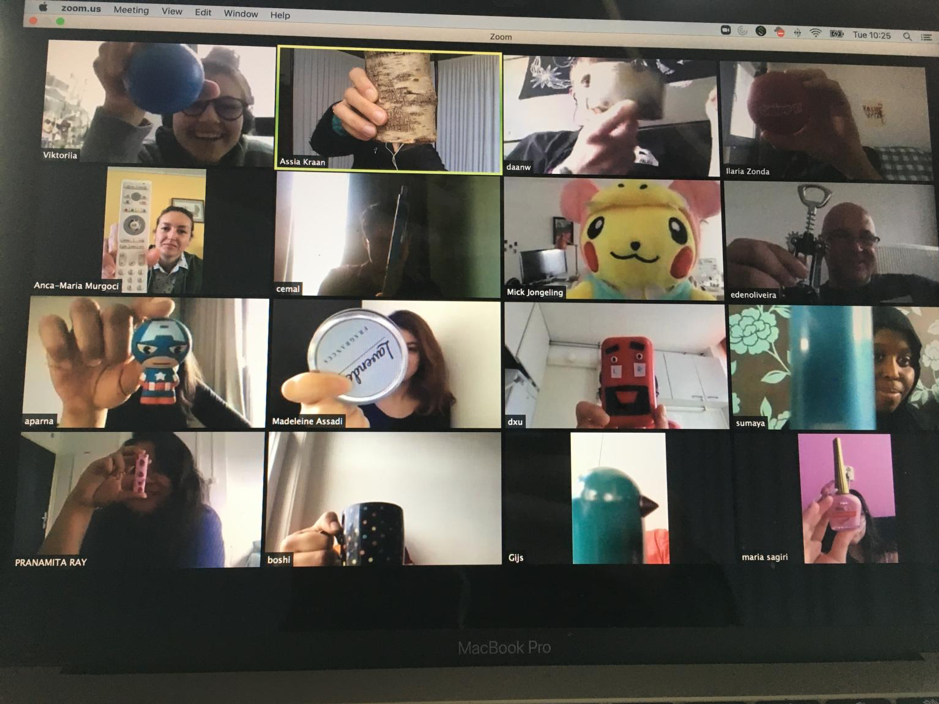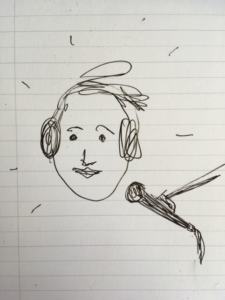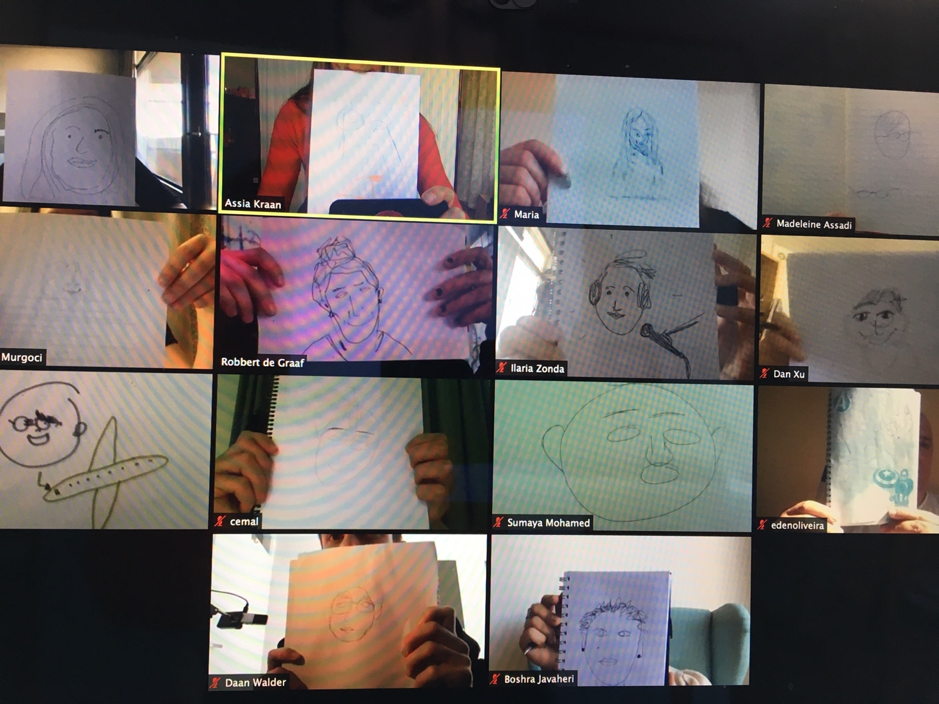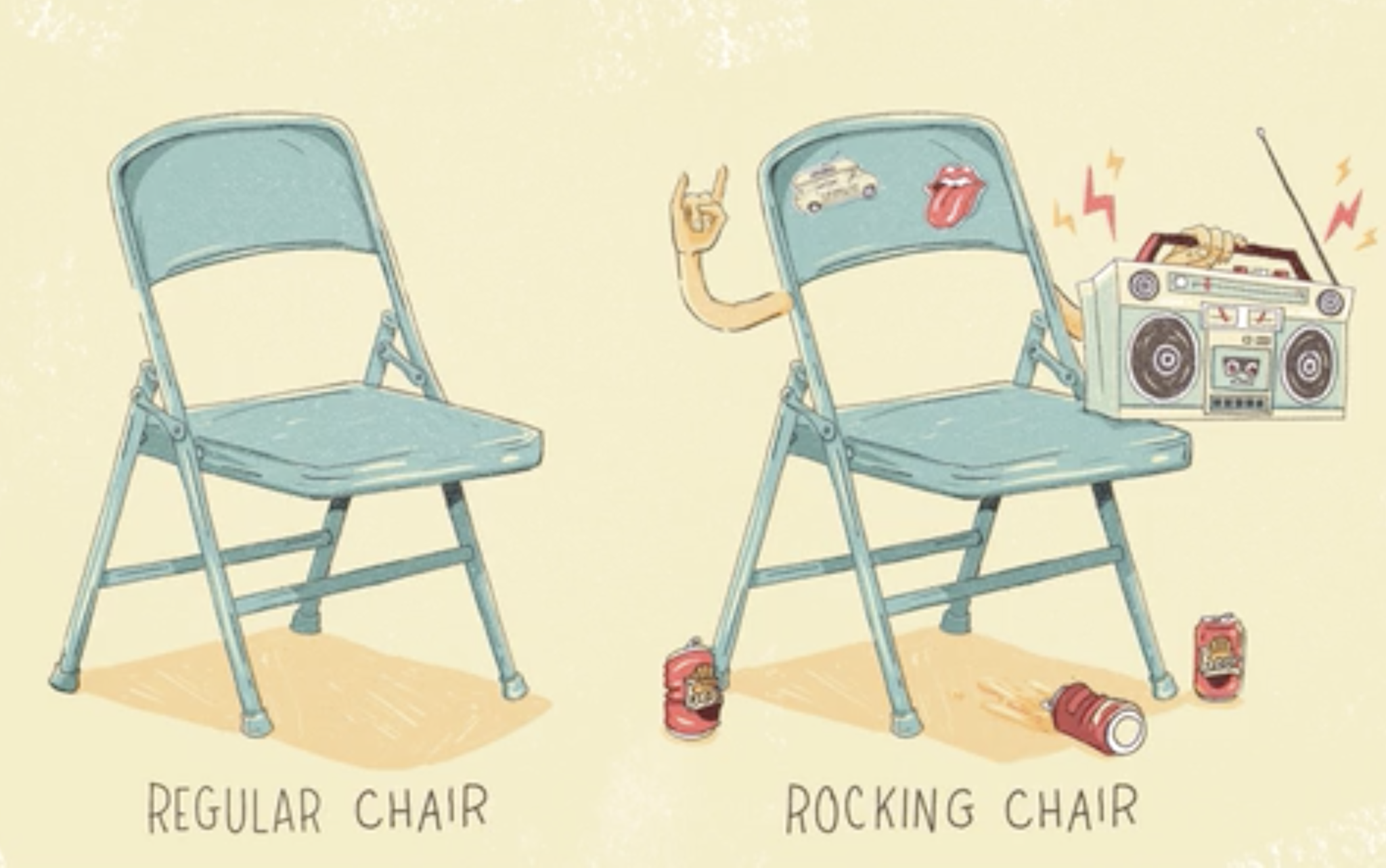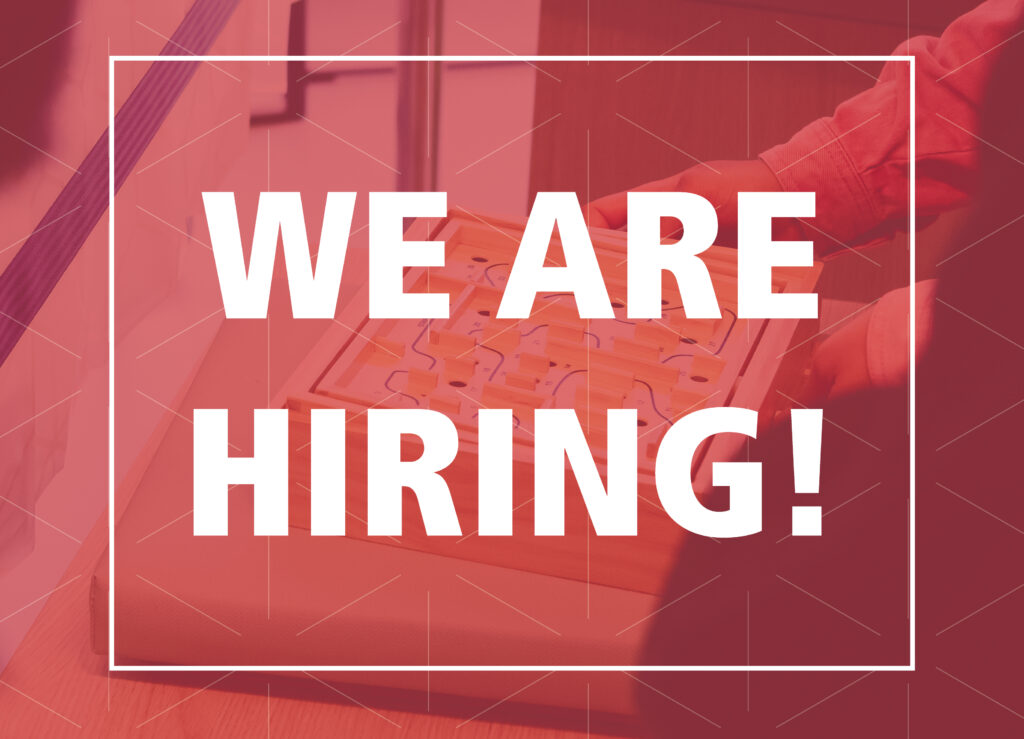Article
Make working from home with your team a success
How to make working from home with your team a success? Online meetings and collaboration is challenging. The past weeks we have tried several fun and inspiring activities to make us more relaxed, connected, inspired and informed. We made a nice collection of 10 tips. Let us know which one is your favourite!
Tip 1. Talking object at check-in and check-out
use ‘talking objects’ to start and end a meeting
At the Digital Society School we are used to start meetings with a check-in (check a selection of check-in questions here) and end meetings with a check-out. Recently we started the meeting with an exercise to focus our attention on this moment and this group of people. We took turns sharing which object we had chosen and why. During the meeting the host gives people ‘speaking time’ when they make clear they have something to say, by holding their ‘talking object’ in front of the camera. The objects also came in handy during the check-out;
How you can do the check-out:
- Everyone turns on the microphone
- Bring your face at normal distance from the camera
- When you’re ready, bring your face close to the camera and say “I check out & show your talking object close to the camera
- This process repeats until all video images are filled with objects and everyone is checked out
Now that we are no longer physically together in the workplace and we can feel less part of a group, it is good to pay attention to the group process during online meetings. Exercises that require collaboration, like this check-out are short but sweet and enhance team spirit!
Tip 2. A wave across the screen
Due to good cooperation, a “wave” will roll over your screen
In the previous tip on talking sticks I mentioned the concept check-in and check-out; a handy form to focus our attention on this moment and to this group of people or to close the meeting and make the transition to the sequel. An activating exercise that you can use at the beginning, the end or as an interruption of your meeting is a “Wave”.
How you can do the wave:
- the host explained the intention: “take turns swinging both arms up and down again and lower them again, so make sure you are at a distance from your computer. Even better; Stand up. I will indicate the order. ”
- because not everyone sees the same order of people on their screen, the host turns on an overview of all participants and lists the order as he sees it. (in your video tool we recommend the view in which you see a row of “tiles”)
- everyone listens carefully when the host lists the order of names, which determines who will “blow his hands” after whom.
- the host turns on the microphone for everyone;
- counts down, lifts own arms and lowers them again, and names the following names at a brisk pace.
- until the wave has been round, then 1 more round to unlearn it.
Suggestion: do this with appropriate music in the background. If everyone agrees you can record this and edit it into a giphy.
Tip 3. Draw your colleague
This exercise invites you to look each other in the eye. Explain that we are going to draw each other without looking at the paper. And yes, we know when you are cheating, the camera shows it ;-).
How you can do it:
- Divide the group into pairs of two that will draw each other.
- Ask everyone to have pen / chalk and paper ready
- Ask everyone to select the “tiles” option in their videoconferencing tool in order for everyone to see everybody and one can look their partner in the eye.
- Count down and start drawing. Say “almost” and “stop” after a short while.
- Invite to add something; a compliment, an object, a piece of clothing, anything.
- Count down and say “stop” again after a short time
- Take turns to show the drawing and explain who it is, what you added and why.
Tip 4. Sit-on-your-chair workout
a warm-up you can do sitting on your chair
How you can do it:
- Put on some relaxing music, loud enough for participants to hear it and also your own voice
- Sit on the chair with both feet on the floor, your back upright
- Gently loosen the shoulders circling from front to back, arms are relaxed
- Rotate your torso in a circle as if your shoulders are drawing a horizontal small circle (hip wide). Remind everyone to make the circle parallel to the front, side and back. You can feel it in your stomach, sides and lower back.
- After a few laps, circle the other way
- You can make the circle smaller or much larger
- Don’t forget to breathe relaxed 😉
This is an exercise that anyone can easily participate in, but for the advanced, the challenge is to write your initial with your shoulders (again horizontally in the air).
Tip 5. Coffee break talks
nothing beats a personal conversation
Meetings with groups larger than 6 people are sometimes inevitable, but you also want to make personal contact happen and share your thoughts and feelings in such teams. Video conferencing tools offer the possibility to give pairs of 2 their own chat room in so-called “breakout rooms”. There can be a personal conversation during a “coffee break”.
- Make sure you know the functionality of breakout rooms
- Give one or a few questions for which the team members are invited to talk
- Make sure everyone talks within the time limit and invite them to return to the common area in time.
- Ask someone to share something, such as a tip or question for the entire group.
Often useful insights emerge in 1-on-1 conversations that otherwise remain hidden in meetings with large groups. Read more about this ‘liberating structure’ for group meetings.
Tip 6. How long does a minute take
a nice silent activity about perception of time
How fast one experiences time passing is different for everyone and this exercise brings it to the surface. The host explains “we will be quiet for a minute. After a sign from me, the timer starts running. When you think the minute is over, you can indicate this by “…” ( for example hold your hand up, or type in the chat or…)
How you can do it:
- All stand up, with microphones and video on
- The host starts a timer and shows everyone with a sign that the timer has started
- Everyone stands still in silence
- When you think the minute has passed, show it by an agreed sign, something that one can keep for a while. Like sitting down or folded hands, or …
- When the minute has passed, the host gives a sign
- The host asks “What was it like to be quiet? Who thought time was long? Who short?….”
- Optional send participants away in breakout sessions to have one-on one conversations on these questions. Then come back to share in the big group their findings.
Tip 7. Where are you?
a quick poll where everyone is
The host prepares some questions that can be answered with yes / no. In this case with hand up / hand down. A slightly more fun version is also possible; let everyone hold a mug, a houseplant, a flag, or anything else in the house.
How you can do it:
Ask “Who…
- – is in Amsterdam?
- – is in the Netherlands?
- – is in his living room?
- – has roommates?
- – has a view of a tree?
- – does NOT have a pet?
- – has ….”
If applicable, let some team members speak about their answer. For example, we had two team members abroad and we briefly talked about their journey there and details there compared to the Netherlands. This is a great activity to do with participants who have entered the meeting room early, awaiting everybody to enter and get ready for the meeting.
Tip 8. Unknown facts
unknown facts about your colleagues
Some things have never been mentioned before or you tried not to draw attention to it. This is sharing conversation on what you want to say about yourself. Preferably something that tells something new about you. For example, a hobby that you practice, something that you are sensitive about (perhaps something like hearing lots of noise at the office floor), or a passion you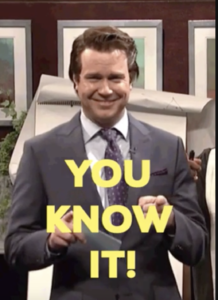 have. It is nice to know what drives someone and sometimes you understand the behaviour of a colleague better, knowing about their person.
have. It is nice to know what drives someone and sometimes you understand the behaviour of a colleague better, knowing about their person.
How you can do it:
- the host asks “what is a personal fact about you that most teammates probably don’t know?”
- the team members take turns sharing a fact
- this happens “popcorn” style when someone feels like it
- It is useful to use talking sticks: an object that you put up in front of the camera to indicate that you are ready to speak. The host will mention your name if you can speak.
- In large groups the host can send people away in breakout rooms with 2 people and have them interview each other on this question. Then people share their findings on their colleague in the larger group.
Tip 9. Fast typing
who types the fastest?
How you can do it:
- Prepare a funny word and explain that everyone should type this word; 1 letter per run around the desk. Whoever sends the word in the chat first ,and has written it correct, wins.
- Show the word (written on a paper) in front of the camera for 10 counts
- Count down
- Have everyone run and type
- See who submits the correct word first
Tip 10. I see, I see…
show your perspective
What do you see from your working at home place?
How you can do it:
- The host asks participants to take a photo of their workplace and add it to a collage on an online platform (such as Mural).
- During the meeting, participants can present their photo and explain what they notice about their view, what they like about it, what bothers them, describe the place like how it sounds when you listen to it, etc.
- A colleague can also describe what strikes him/her about the view. This can offer a different perspective.
We used the insights we got from our window view to do a check-out as well. We shared “I check out with the perspective of …” and we choose the word/ remark that struck us most. Like ‘see far’ or ‘standing out’.
image credits: Track Digital to Physical and Gighy images
